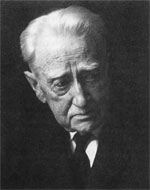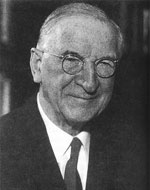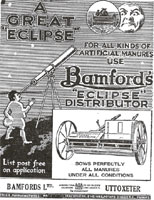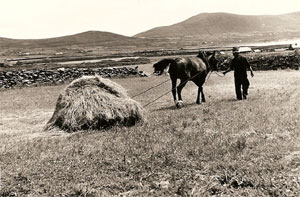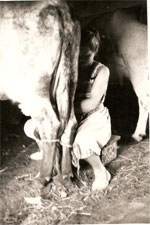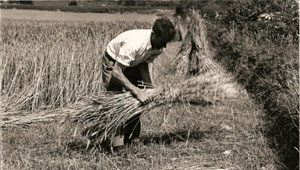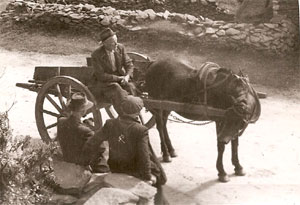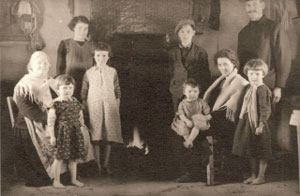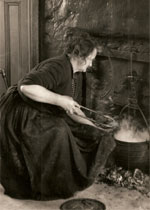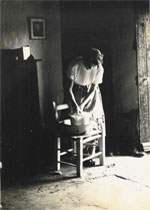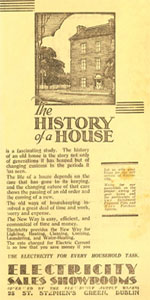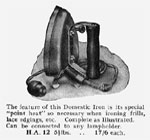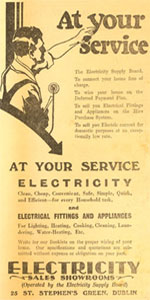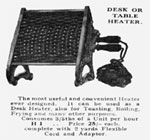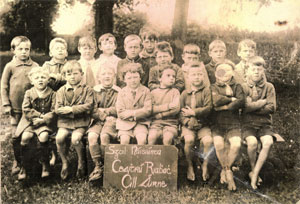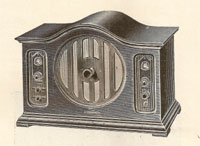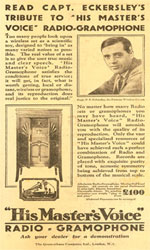Ireland in the 1930s - 1940s
The Political Scene - A Brief Sketch
Agriculture
Home and Family Life
Social Life
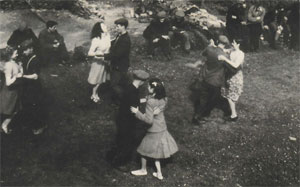 Cross-roads dancers |
In the countryside, crossroads dancing was a frequent pastime and often a platform was erected for this purpose. H. V. Morton described one on his visit to Killarney in 1930. It was situated just outside Killarney, on the far side of the bridge leading to Muckross. Morton visited this platform one Sunday hoping to see some dancing, but was to be disappointed on this occasion. There he found 12 youths sitting on a wall, but there was not one girl. One boy had a fiddle, another a concertina. A number of girls eventually appeared on the scene, but unfortunately, they passed right on by. Disappointed, the boys packed up their musical instruments and departed. Morton referred to the marked segregation of the sexes, which he described as 'a remarkable feature' of the Irish countryside. |
|
Sport was popular. Gaelic football, hurling and soccer were all played and the Annual Horse Show in Dublin was a big event. Card playing at night was also popular among men. The big sporting occasion of 1932 was the Tailteann Games. These can be compared to an Irish version of the Olympic games, which that year, took place in Los Angeles. The Tailteann Games were previously held in 1924 and 1928. |
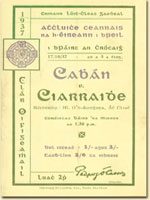 All Ireland Football Final Programme, Cavan verses Kerry, 1937. |
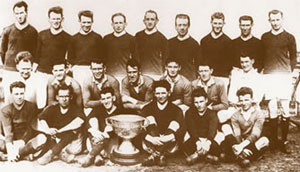 Kerry Senior Football Team, All-Ireland Champions, 1930 |
Kerry's All-Ireland Senior Football titles, 1930 - 1950: 1930: Kerry 3-11 Monaghan 0-2 1931: Kerry 1-11 Kildare 0-8 1932: Kerry 2-7 Mayo 2-4 1937: Kerry 4-4 Cavan 1-7 1939: Kerry 2-5 Meath 2-3 1940: Kerry 0-7 Galway 1-3 1941: Kerry 1-8 Galway 0-7 1946: Kerry 2-4 Roscommon 1-7 (draw) 1946: Kerry 2-8 Roscommon 0-10 (replay) |
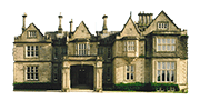
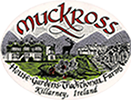
© Muckross House Research Library, Killarney, Co. Kerry, Ireland. Telephone: 00 353 (0) 64 669 1700 Library E-mail: library@muckross-house.ie
Trustees of Muckross House (Killarney) CLG. FULLY ACCREDITED MUSEUM Museum Standards Programme of Ireland
© 2025





